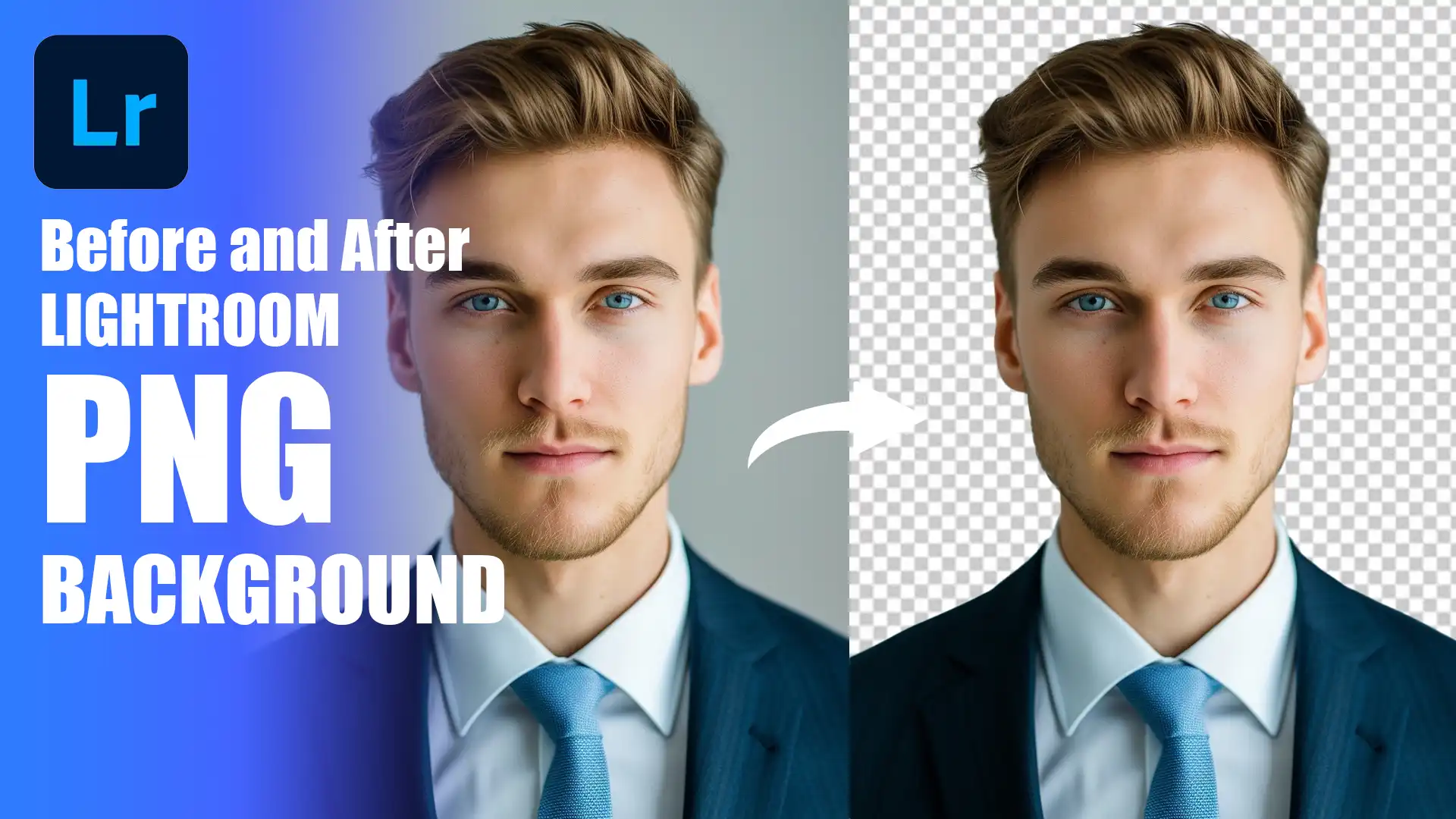
If you’re looking to elevate your photography, mastering the use of a PNG background in Lightroom could be the goal.
Imagine transforming and removing the background of your photos with ease, giving them a professional touch without extensive effort.
This article will walk you through the steps to effortlessly enhance your images using Lightroom, making you fall in love with image retouching all over again.
Ready to captivate your audience with creativity with stunning photography and visuals?
Let’s get started and explore and unlock the potential of your photography skills!
Table of Contents
Getting Started with Lightroom
Getting started with Lightroom is simple and rewarding. Before diving into the world of Lightroom photo editing, let’s make sure you have everything set up and ready to go.
Installing Lightroom
Let’s start with the Lightroom installation.
First, go to the Adobe website. Click on the download button for Lightroom.
Ensure that your Mac or PC meets the system requirements to stand up to the software’s performance demands.
Follow the instructions on the screen. It’s straightforward, don’t worry. After you finish, the application will be installed on your computer.
Now, open Lightroom for the first time. You will need to sign in with your Adobe ID. If you don’t have one, create it. This step is necessary to get started.
Basic Interface Overview
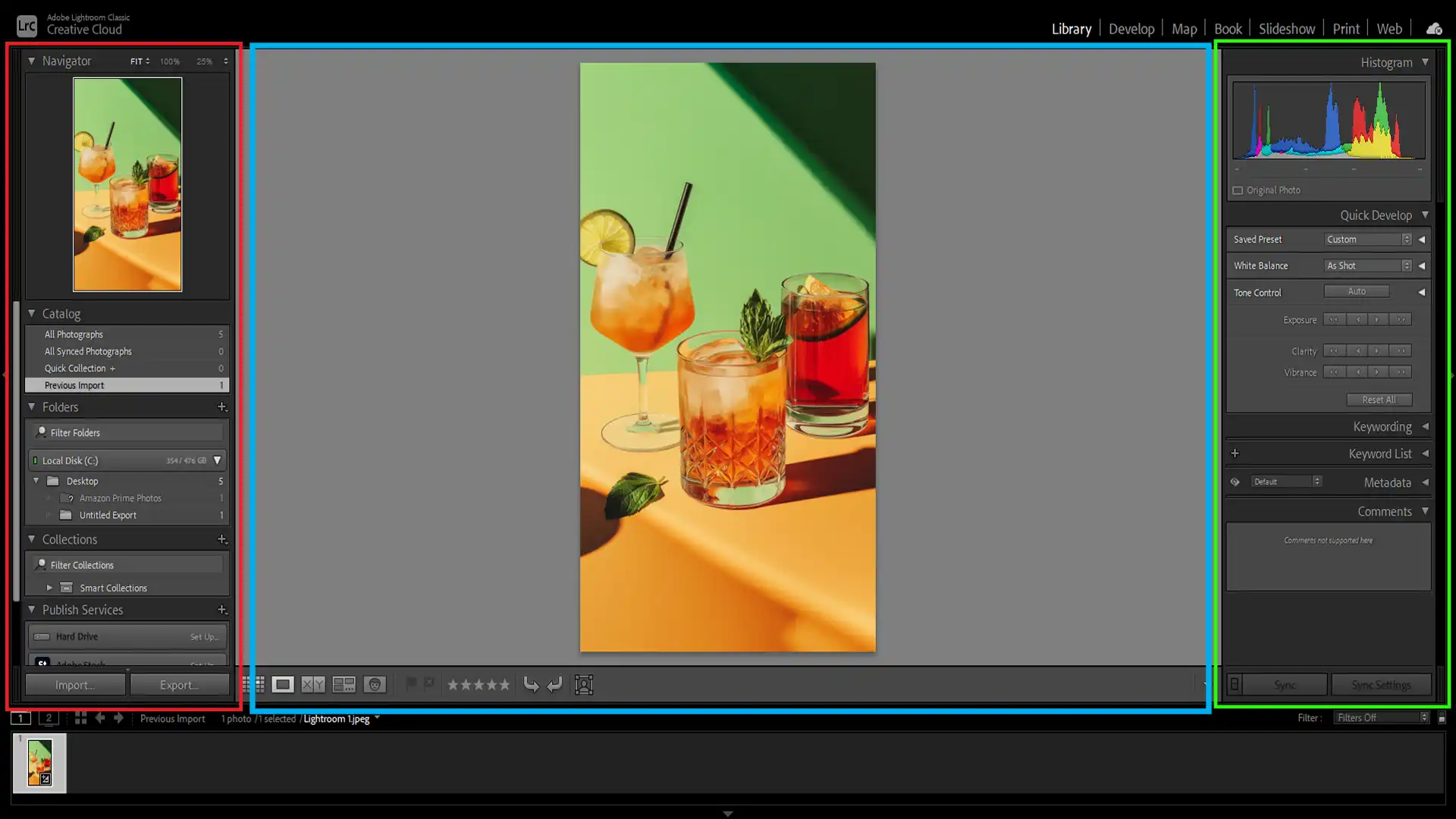
Great, now let’s look at the interface.
When you open Lightroom, you see a main image preview window with several tool sections. Let’s focus on the left, center, and right of the windows, the screen areas.
- Left Panel: This is where you import and organize your photos. It shows your folders and collections.
- Center Area: Here is your photo workspace. This is where you do most of your editing.
- Right Panel: This section includes essential tools in Lightroom. You can make adjustments, apply filters, and edit details.
Importing Photos
To start to edit, you need to import your photos first.
Follow these steps:
- Click the "Import" button at the bottom left.
- Choose the folder where your photos are saved.
- Select the ones you want to work with and click "Import".
It’s easy. Your photos will appear in the center area.
Basic Editing Tools
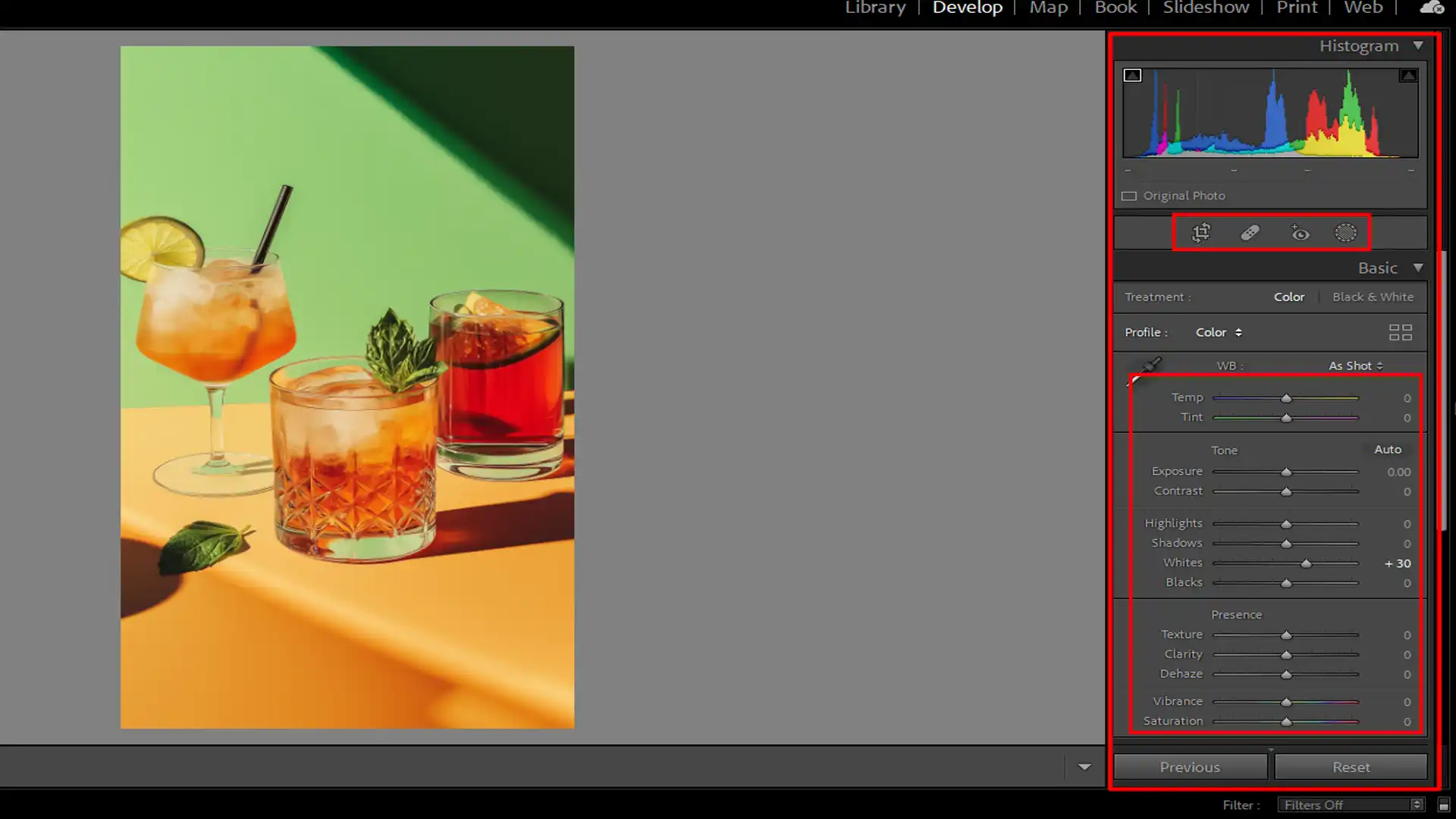
Lightroom’s basic features and presets offer what you need for simple picture enhancement.
- Use the Cropping tool to adjust the size and perspective of your image.
- The Exposure slider helps you adjust brightness.
- The Contrast slider changes the distinction between light and dark areas.
- You can even easily remove backgrounds by using the appropriate functions.
Experiment with them to finally see what works best for your images.
Saving and Exporting Images
After modifying, you need to save and transfer your work.
- Click the "File" menu and select "Export".
- Choose the destination where you want to save your edits.
- Set the document format and quality. I recommend using PNG or JPEG for most needs.
- Hit "Export" and your photos are saved locally.
Transferring doesn’t take long, and now you have your edited images ready to share.
Pro Tip: Use Lightroom shortcuts to speed up your workflow. For instance, pressing “R” takes you directly to the cropping tool. This saves time and makes image processing more efficient.
How to Remove Lightroom PNG Background
Removing a Lightroom PNG background can be done quickly with the right approach. Let’s explore the steps that will help you achieve a clean, professional result
Step-by-Step Process for Removing Lightroom PNG Background
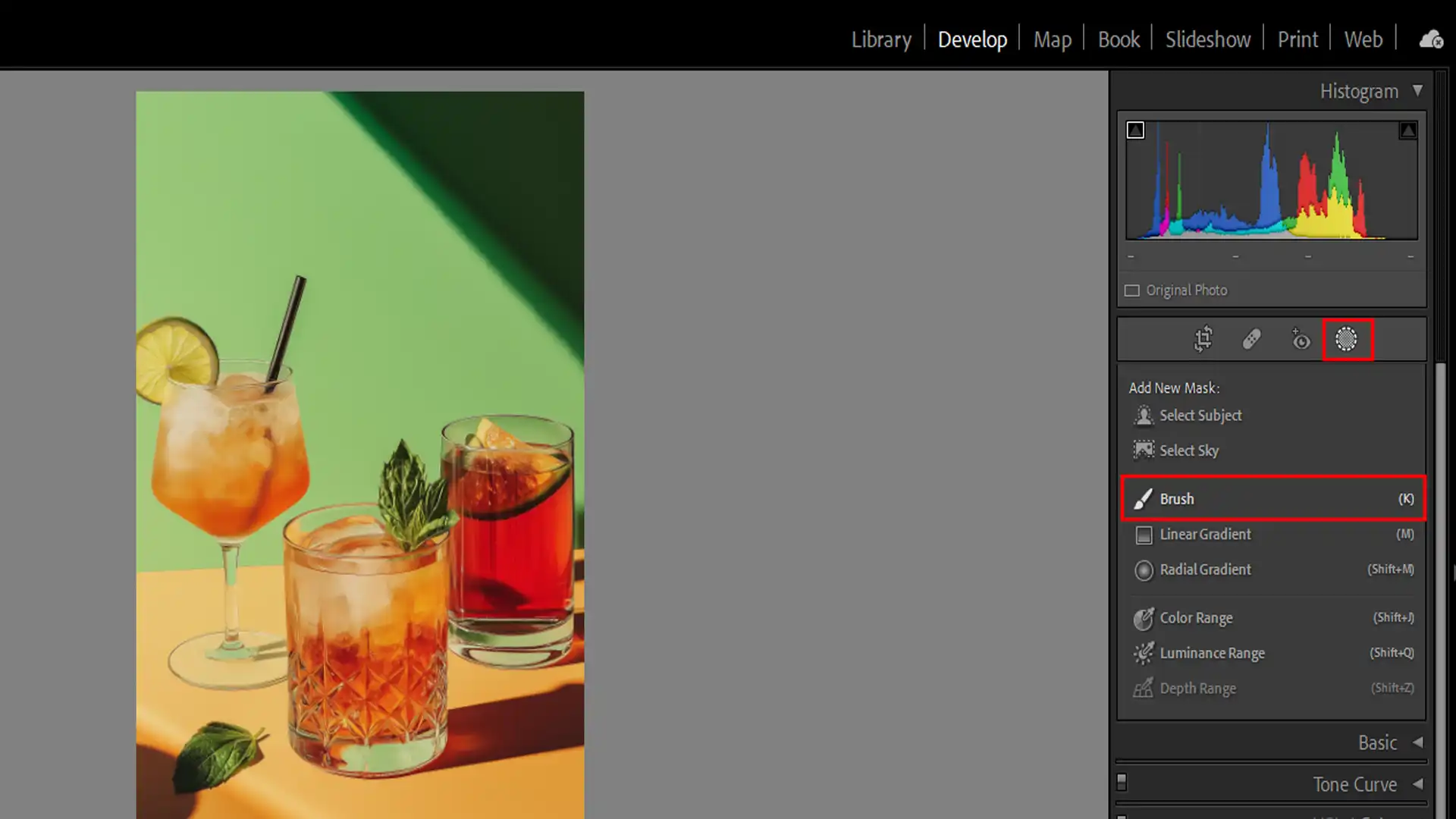
Lightroom offers a straightforward way to remove backgrounds.
Here is a step-by-step guide:
- Open Lightroom and import your photo.
- Switch to the Develop module by pressing "D".
- Select the Adjustment Brush tool, usually found on the right panel.
- Adjust the brush size and feather to match your needs.
- Paint over the area you want to remove.
- Use the Erase option if needed to refine your selection.
Using the Adjustment Brush
The Adjustment Brush is your best friend when it comes to removing backgrounds. It’s flexible and powerful.
Follow these steps:
- Choose the Adjustment Brush tool from the right panel.
- Customize settings such as brush size, feather, and flow.
- Click and drag over the areas you want to erase.
- Hold down the Alt key to change the brush to an eraser if necessary.
Keep practicing, and you’ll master it in no time!
Editing Edges for a Clean Look
After painting over the Lightroom PNG background, adjusting edges ensures a professional finish.
Here’s how:
- Zoom into the edges of your selection.
- Use a smaller brush size for detailed work.
- Press "O" to overlay a mask showing what’s selected.
- Continue modifying until you achieve a clean look.
Now you know how to use Lightroom to remove backgrounds efficiently. Remember, practice makes perfect.
Pro Tip: Combining presets and the Adjustment Brush with other advanced lightroom features can help you create stunning images.
For more advanced refining, consider learning about the difference between Photoshop and Lightroom.
Creating a Transparent Lightroom PNG Background
Lightroom isn’t traditionally known for creating transparent backgrounds, but surprisingly, it offers options to achieve this with some features, especially the Adjustment Brush.
Here’s a straightforward guide to help you do it.
Shipping as PNG file
First, we need to transfer your image as a PNG because they support transparency.
Follow these steps:
- Start in Lightroom and select the image you want to edit.
- Click on the “File” menu and choose “Export.”
- Ensure you select PNG from the format options.
Once the image is exported, move to import the image into Photoshop for further edits:
- Using the menu bar, select File › Import › Images from Device.
- In Photoshop, use the Magic Wand tool to select the background.
- Press delete and save as PNG again to retain that transparency when you're done.
Preserving Your Work
Consistently preserving your work is important. In Lightroom, all adjustments are non-destructive, meaning your original image remains unchanged. Remember to save your changes by transferring the edited image.
To save space and keep things organized, follow these tips:
- Regularly clean up your unused images.
- Create folders to house your exports and originals separately.
This way, you won’t get lost in the area of background edits and pictures. If you accidentally make unwanted changes, you can always revert to the original image without losing any progress.
Backup your work periodically to prevent data loss from unexpected failures.
Lightroom’s wonderful blend of power and simplicity makes it an excellent choice for casual and professional edits alike.
Pro Tip: Use keyboard shortcuts to speed up your refining process. For instance, pressing the “D” key switches you to the Develop module, where most major edits happen. Similarly, “E” takes you back to the Library module. To be more efficient, familiarize yourself with other essential tools in Lightroom.
While Lightroom excels in non-destructive image refinement and organization, Photoshop offers more enhanced features like the Content-Aware Fill and Magic Wand Tool for detailed edits, especially when creating a transparent background.
Advanced Tools for Lightroom PNG Background Removal
Removing backgrounds can seem tricky, but Lightroom and Photoshop make it simpler. In this part, let’s dig into the enhanced features that can help with this task.
You’ll be surprised at what you can achieve with a few clicks.
Using the Clone Tool
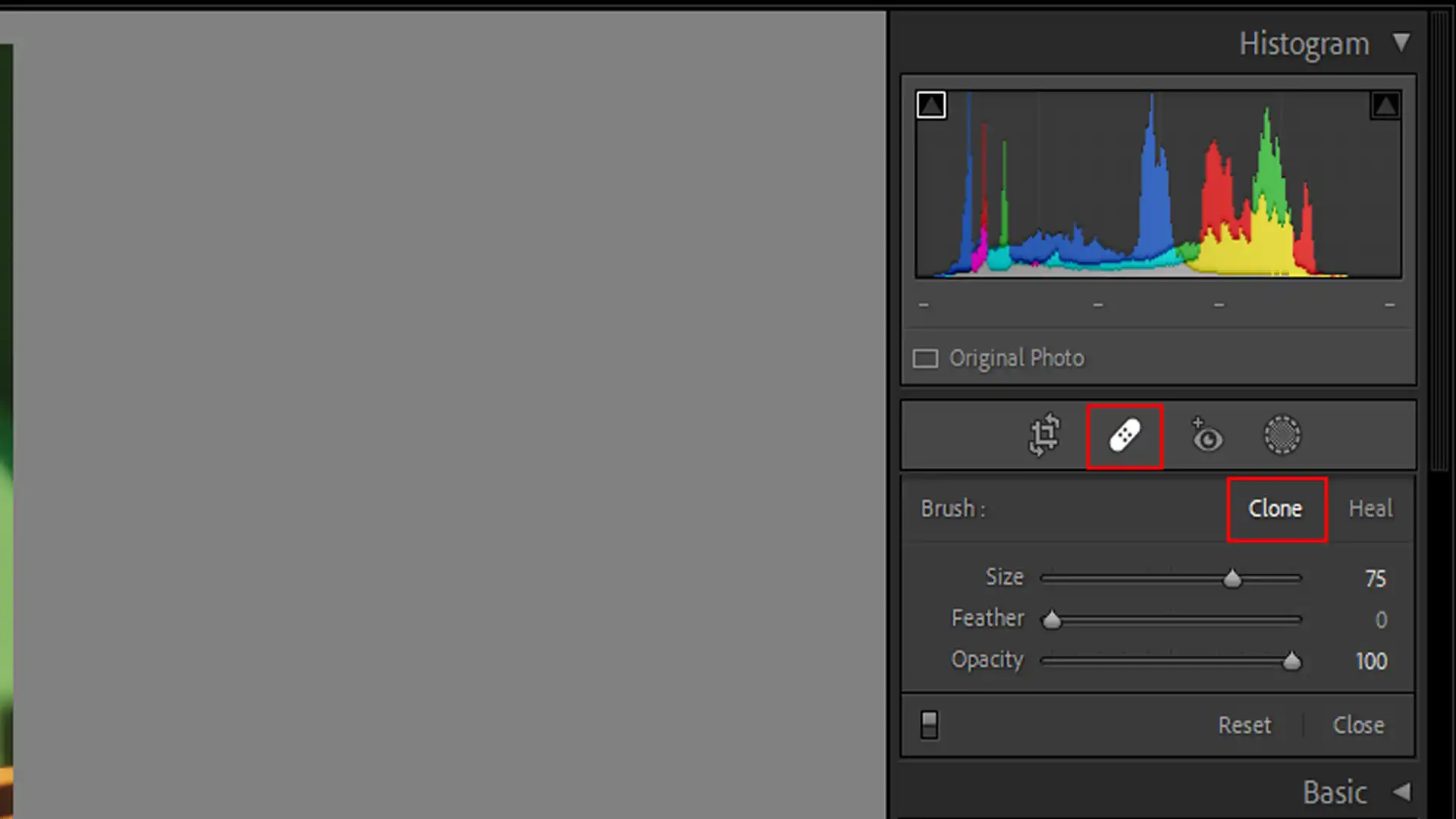
First up is the Clone tool. This tool copies pixels from one part of the image and applies them to another part.
- Select the Clone Tool from the toolbar.
- Adjust the brush size to fit the area you need to work on.
- Click on the area you wish to clone. Lightroom will duplicate the background.
- Paint over the area you want to remove. The clone will cover the background seamlessly.
- Create folders to house your exports and originals separately.
You don’t have to be perfect. It just takes practice. Be patient and methodic.
Leveraging AI Features
Next, let’s talk about AI. Adobe uses powerful AI features to help with background removal. Functions like the Magic Wand use AI to select and erase backgrounds swiftly. Not only is it quick, but it’s also incredibly accurate.
Here’s how to use it:
- Select the Magic Wand tool in Photoshop.
- Click on the area you want to remove. The tool will automatically detect and select the background.
- Hit delete, the background is gone.
This method is great if you’re dealing with complex edges or intricate specifics. AI does the heavy lifting for you, making your life easier.
Pro Tip: Keep preserving your work often. This ensures you can return to previous points if something goes wrong.
Remember to save regularly. your image helps safeguard your photography projects from potential errors or unexpected issues.
When working with advanced tools for Lightroom PNG background removal, the spot healing brush is invaluable. It helps seamlessly blend areas and correct imperfections, enhancing your image’s final look.
Document Management Tips
Don’t forget to manage your files well. Keep backups, organize your folders, and stay persistent.
With these tips, you’ll master tools like Lightroom and Photoshop in no time. Enjoy the journey!
What are the Best Practices for Background Removal in Lightroom?
Lightroom simplifies background removal with its intuitive tools. Let’s walk you through the best practices to achieve a clean, professional result without much hassle.
Use Precise Selection Tools
Adjust the selection brush size to match the area you want to work on. Experiment with the tool settings until you find what works best for your specific photo.
Pay attention to edges and fine aspects to get a natural-looking result.
For precise selection tools, the quick selection tool is essential. It allows for fast and accurate selections, making your editing process smoother.
Layer Masking for Non-Destructive Editing
Create a layer opacity mask to easily revert changes without affecting the original image. Adjust opacity to blend the transparent background, and foreground seamlessly.
Utilize Artificial Intelligence Features for Removing Lightroom PNG Background
Let Lightroom’s AI tool help identify the background areas that need removal. Use the Lightroom magic wand to quickly select background areas for speedy editing and refine the transparent background for a smoother result.
Save Your Progress Frequently
Keep frequent backups to avoid losing hours of work. Organize your image files into folders for quick access and future edits.
Pro Tip: After removing your background, boost your image quality by adjusting the contrast and saturation settings!
Leverage Adobe AI for smarter background removal in Lightroom, ensuring more precise selections and quicker adjustments with minimal effort.
Photo Editing Tips for Lightroom PNG Background Removing
Edit pictures can seem daunting, but a few straightforward steps help.
When it comes to applying photo editing tips for Lightroom, it’s essential to be on top of your game.
Focusing on the portrait background can transform your images. Enhancing the background in portraits helps highlight your subject effectively.
Color Correction
First, let’s talk about color correction. This step adjusts the colors in your image to make them look natural.
Steps for Color Correction
Here are the steps for successful color correction:
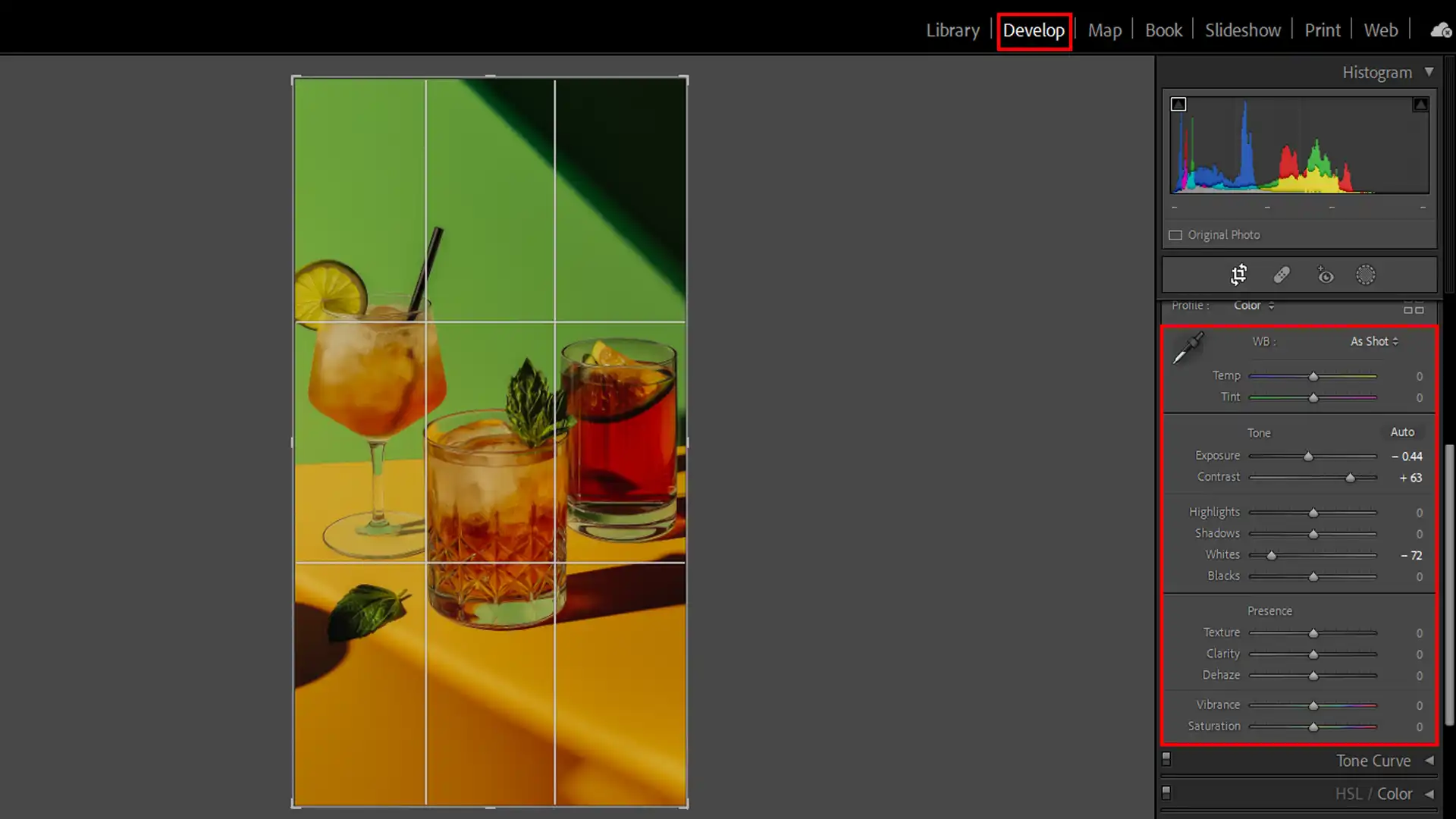
- Adjust the white balance: This balances the colors against true white, making your image look more real. If your image looks too warm or cold, tweak the white balance slider until it looks right.
- Correct the exposure: Fix any lighting issues your shot may have. Boost the brightness if it’s too dark, or tone it down if it's too bright.
- Adjust the contrast: Make the elements in your image pop.
- Tweak the vibrance and saturation: Enhance the intensity of the colors without making them look unnatural. Experiment with small changes to see what works best for your picture.
Enhancing Details
Once you’ve corrected the Lightroom PNG image background colors, it’s time to make adjustments to enhance and change the background details in your image.
Knowing how to blur a background is important to enhancing the details in your images. This technique helps your subject stand out sharply.
Steps for Enhancing Details
Transform your photo with these simple steps to bring out the finest details:
- Zoom in: Look for areas that need attention. Lightroom shortcuts can help you quickly navigate through your image.
- Use the sharpen tool: Make the edges in your image clear by using the sharpen tool. Be careful not to overdo it, or your image may look unnatural.
- Adjust the clarity slider: Add depth to your photo. This setting enhances the midtones, adding detail without affecting the overall look too much.
- Use the radial filter: Create an oval-shaped focus area to draw attention to a specific part of your image. Adjust the background around this focus area to make your subject pop even more.
Pro Tip: Always work in layers. This way, you can easily undo mistakes or try out different settings without ruining your original image.
If you’re using Photoshop, the content-aware fill tool can be incredibly useful for removing unwanted objects seamlessly.
Common Mistakes and How to Solve Them While Lightroom PNG Background Removal
When editing photos, certain mistakes can easily slip through the cracks.
Let’s look at some common errors and simple ways to fix them.
| Mistake | Description | Solution |
|---|---|---|
| Ignoring White Balance | Colors may look unnatural. | Adjust white balance using the eyedropper tool in the Basic panel. |
| Incorrect Exposure Settings | Image may be too bright or dark. | Use the Exposure slider to correct lighting. |
| Avoiding Contrast | Details may blend together. | Enhance contrast with the Contrast slider. |
| Over-Saturating Photos | Colors can become distorted. | Increase vibrance to boost color without over-saturation. |
| Not Zooming In | Small errors may be missed. | Zoom in to correct details and sharpen edges. |
| Misusing Clarity | Can make photos look unnatural. | Use Clarity slider moderately to add depth. |
| Overlooking Specific Details | Important areas might be ignored. | Apply the radial filter for targeted adjustments. |
| Not Working in Layers | Difficult to undo mistakes. | Edit in layers for non-destructive changes. |
| Removing Unwanted Objects | Objects can disrupt the composition. | Use Content-Aware Fill in Photoshop to remove unwanted items. |
1. Ignoring White Balance
Ensuring correct white balance helps make colors appear natural.
Adjust and change the white balance in the Basic panel by clicking on the eyedropper tool and selecting a neutral area of your photo.
2. Incorrect Exposure Settings
To resolve this subject, use the Exposure slider under the Basic Adjustments box. Slide it left or right to find the optimal lighting for the subject in your image.
3. Avoiding Contrast
Adjusting the Contrast slider can help make details stand out. Move the slider until you observe significant improvements.
4. Over-Saturating Photos
Instead, increase to remove the vibrance. This adjustment adds color intensity without affecting the already saturated parts of the image too much.
5. Not Zooming In
Zooming in close is important for detailed altering. When you zoom in, you can easily identify the areas needing attention.
Pay special attention to edges that might need sharpening. Use the sharpening tool carefully to enhance the edges without creating noise.
6. Misusing Clarity
Clarity is important for adding depth to your photos. Use the Clarity slider to bring out textures. However, don’t overuse it to avoid an unnatural look.
7. Overlooking Specific Details
The radial filter allows you to select where to make subtle adjustments to particular subject areas of the background of your photo, drawing attention where it’s needed.
8. Not Working in Layers
This technique allows you to make non-destructive edits. It enables you to undo mistakes easily and try different settings without affecting your original image.
9. Removing Unwanted Objects
The Content-Aware Fill tool in Photoshop is handy for this purpose. Select and highlight the background object you want to remove, and Photoshop will intelligently fill the space, making removing it look natural.
Pro Tip: Use a transparent background image when you want to merge images seamlessly. This technique is especially useful for composite photography.
Frequently Asked Questions (FAQs)

How To Remove Background In Lightroom
- Open your image in Lightroom and select the 'Develop' module.
- Use the 'Adjustment Brush' tool to paint over the background you wish to remove.
- Adjust the brush settings to ensure accurate selection and edge detection.
- Once selected, decrease the 'Exposure' slider to make the background darker or use the 'Brush' tool to apply color adjustments.
What is Background Removal in Lightroom?
- Background removal in Lightroom refers to the process of isolating the subject by making the background less distracting.
- This is typically done using selective adjustment tools to blur, darken, or desaturate the background elements.
What are the Other Tools for Background Removal in Lightroom?
Here are some other tools for background removal:
- Radial Filter: Focuses on a circular area, allowing you to apply effects outside or inside the circle.
- Graduated Filter: Lets you apply gradual adjustments to a part of the image, useful for backgrounds that are uneven.
- Spot Removal: Useful for removing small background elements or imperfections.
What are the Best Practices for Background Removal in Lightroom?
Here are some best practices for background removal:
- Always start with a high-resolution image for more detailed editing.
- Use a feathered brush to create smoother transitions and avoid harsh edges.
- For precision, keep adjusting the brush size according to the area you are working on.
- Regularly toggle the overlay view to see the areas you have selected and ensure complete coverage.
Conclusion
Mastering how to work with a Lightroom PNG background can significantly elevate your photo editing skills.
While Lightroom isn’t designed for background removal, it excels at enhancing the overall quality of your images. For background removal, you’ll find tools like Photoshop and other dedicated software very useful.
From my experience, combining Lightroom for detailed adjustments with Photoshop for background work creates a powerful workflow.
If you’re looking to dive deeper into photo editing, check out my Photoshop Course and Lightroom Course. Both will give you the skills to take your images to the next level.
For a great start with these tools, you can get Adobe Photoshop and Adobe Lightroom , on the official Adobe website.
Read more about Photoshop:














